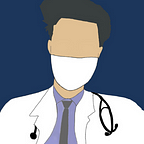This is what you don’t know about OCD.
Obsessive-compulsive disorder (OCD) is characterized by obsessions, compulsions, or both. Let’s start by understanding what actually is an obsession or a compulsion. Obsessions are recurring, persistent, unwanted, anxiety-provoking ideas, images, or urges. Compulsions (also called rituals) are mental acts or are certain actions that people feel inclined to perform to try to lessen or prevent the anxiety caused by the obsessions. This leads to a never-ending, vicious loop.
According to a study Obsessive-compulsive disorder (OCD) is slightly more common among women than men and affects about 1 to 2% of the population. On average, OCD begins at about age 19 to 20 years, but over 25% of cases begin before age.
OCD differs from Obsessive Compulsive Personality Disorder(OCPD) or even other psychotic disorders although people with these disorders may have some of the same characteristics, such as being orderly or reliable. It is rather a neuropsychiatric disorder.
Symptoms
People with obsessive-compulsive disorder (OCD) have unwanted obsessions that occur on a loop. These obsessions intrude even when people are thinking about and doing other things. Also, obsessions usually cause great distress or anxiety. The obsessions usually involve thoughts of harm, risk, or danger as depicted in David’s story.
Common obsessions include the following:
· Concerns about infections (for example, worrying that touching doorknobs will cause disease)
· Doubts (for example, worrying that the front door was not locked, or if the gas stove was left on )
· Concern that items are not perfectly lined up or even
These obsessions do not tend to give pleasure to people, it often is like a bully in their mind provoking that their feeling is strong and compelling them to work on it.
Compulsions (also called rituals) are one way people respond to their obsessions. For example, they may feel driven to do something — repetitive, purposeful, and intentional — to try to prevent or relieve the anxiety caused by their obsessions.
Common compulsions include the following:
· Checking to relieve doubt (for example, checking many times to make sure a door is locked)
· Washing or cleaning to be rid of contamination or infection.
· Ordering (for example, arranging tableware or workspace items in a specific pattern)
· Counting (for example, repeating an action a certain number of times)
Most people with OCD are somewhat aware that their obsessive thoughts are not risky but irrational and that their compulsive behaviors are excessive yet sometimes they tend to perform it secretly. However, a few people are convinced that their obsessions are legitimate and that their compulsions are reasonable. Many people with OCD also have other mental health disorders.
More than one-quarter to about two-thirds of people with OCD have suicidal thoughts at some point, and 10 to 13 percent attempt suicide.
Diagnosis
· A doctor’s evaluation, based on specific diagnostic criteria
Doctors diagnose the obsessive-compulsive disorder based on symptoms: the presence of obsessions, compulsions, or both. The obsessions or compulsions must be at least one of the following:
· Time-consuming
· Cause significant distress or interfere with the person’s ability to function
Treatment
· Cognitive Behavioural Therapy (CBT)- The most common method being Exposure and Ritual Prevention Therapy (ERP)
· Certain antidepressants such as SSRIs (Selective Serotonin Reuptake Inhibitors)
· Or a combination of both ERP and antidepressants
· Others such as Psychodynamic Psychotherapy
Exposure and Ritual Prevention Therapy(ERP), a type of Cognitive-Behavioural Therapy, is often effective in treating obsessive-compulsive disorder. Exposure therapy involves gradually and repeatedly exposing people to whatever (situations or people) triggers obsessions, or discomfort while asking them not to perform the compulsive ritual. Discomfort or anxiety gradually diminishes due to repeated exposure as people learn that the practices are unnecessary for reducing discomfort. The improvement usually persists for years. Often a strong mindset helps a lot.
Selective serotonin reuptake inhibitors (such as fluoxetine), a type of antidepressant, and clomipramine, a tricyclic antidepressant, are often effective. Many experts believe that a combination of exposure and ritual prevention therapy and drug therapy is the best treatment.
Psychodynamic psychotherapy (which emphasizes the identification of unconscious patterns in current thoughts, feelings, and behaviors) and psychoanalysis have generally not been effective for people with obsessive-compulsive disorder.
Often reading books about positivity and how others overcame OCD helps a lot in building a strong mindset. Listing down some of my recommendations. You can either get a hardcopy or download it free from audible app(https://play.google.com/store/apps/details? id=com.audible.application)-for android users or (https://apps.apple.com/in/app/audible-audiobooks-podcasts/id379693831)- for iOS users as per your preference.
- The Power of Your Subconscious Mind by Dr. Joseph Murphy(https://amzn.to/3rWN1Uz)
- The Man Who Couldn’t Stop: The Truth About OCD by David Adam (https://www.amazon.in/Man-Who-Couldnt-Stop-Truth/dp/1447277686/ref=sr_1_3?)
OCD thoughts are not the problem, your choice to take them seriously is the problem. If you have the will, you will definitely find a way to conquer this phase.
